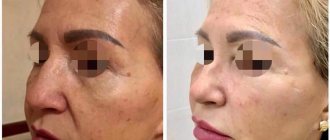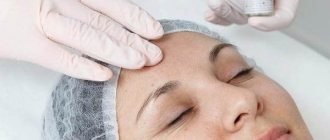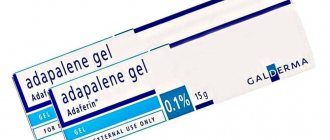Lipofilling is an operation to change volumes or contours using the patient’s own adipose tissue, which in this case acts as an alternative to other materials (silicone or fillers). The procedure is safe, low-traumatic and effective.
With the help of such a correction, it is possible to eliminate various aesthetic defects, including loss of skin elasticity, unevenness and asymmetry of shapes, and insufficient volume of any part of the body. The working areas for the operation are quite extensive: fat cell injections are carried out on almost the entire body, from the face to the legs.
The advantages of this operation include good aesthetic results with no risks of rejection or allergies, since from the body’s point of view, the body’s own fat cells are not something foreign. However, how long lipofilling lasts—or rather, its results—depends on the patient’s attitude toward body care during the rehabilitation period.
Indications and contraindications
Correction is indicated in the following cases:
- insufficient volumes,
- need for contouring
- asymmetry,
- loss of skin elasticity,
- the appearance of wrinkles,
- retracted scars (injuries, injections),
- other types of deformations.
With the help of fat cells, they enlarge the breasts, shape the buttocks, add volume to the lips and cheekbones, smooth out the surface of the neck and more. Injections of adipose tissue are a safe and at the same time effective method of augmentation and correction.
Despite its safety, this type of correction has contraindications. People with diabetes, cancer, chronic disease in the acute stage or acute infection will not be allowed to undergo surgery. Intervention is difficult or prohibited in patients with a shortage of donor tissue. Pregnant and breastfeeding women will also be exempt from surgery. Otherwise, the procedure has no contraindications, as well as no restrictions on gender or age (with the exception of children under 18 years of age).
The operation is effective for highlighting cheekbones, enlarging lips, eliminating nasolabial folds, and so on.
Why hand lipofilling?
Your own adipose tissue is not rejected by the body and does not cause allergies. The transplanted fat grows with blood vessels, takes root and, accordingly, guarantees long-term preservation of the lipofilling result. Only 20% of the adipose tissue is destroyed after transplantation, the remaining 80% of the transplanted fat takes root, thereby lipofilling of the hands ensures the return of elasticity and youth to the skin of the hands, relieving it of dryness and wrinkles.
Hand lipofilling: rehabilitation period
For 1 day after lipofilling of the hands, the patient wears a protective bandage on the skin of the hands, and then only applies special ointments 3 to 4 times a day.
You need to take care of your hands for a month after surgery. It is recommended to keep them above waist level for two weeks to reduce swelling of the operated area. You should not put your hands under your head while sleeping, wash dishes or do other household work. A visit to the sauna should be postponed for a month.
The patient should not be afraid of bruises in the puncture area: they will disappear after 5 to 7 days. It makes sense to evaluate the effect of the operation after 2–3 months, when most of the fat cells have taken root in the new location.
Flawless makeup and a chiseled figure will not deceive others. After all, it’s enough to look at a woman’s hands to determine her real age. Hands, unlike the décolleté and neck, cannot be hidden under an elegant scarf. Dozens of times a day, women’s hands, like restless birds, fly up to fix their hair, to respond to a greeting handshake, to nestle comfortably in the palms of a loved one. A woman who decides to undergo lipofilling of her arms will, at any age, perform all these movements with natural grace and confidence in her own youth and attractiveness.
How is the operation performed?
During correction, the surgeon follows a predetermined technique. Several small punctures are made in the donor areas, after which fat cells are collected using a special instrument. Next, the adipose tissue goes through purification from foreign impurities. The prepared material is introduced into the working area through thin cannulas, also through small punctures.
The operation is almost always performed under general anesthesia. Sedation is also used. The duration ranges from half an hour to four hours, depending on the complexity and volume. After completing all the manipulations, the surgeon applies sutures and a fixing bandage to the punctures. The patient remains in the hospital for a short period of observation and is then discharged home.
Preparation
At the stage of preparation for lipofilling of the hands, the doctor selects the most suitable recipient area for taking lipoaspirate. As a rule, preference is given to areas where there is a sufficient amount of adipose tissue - these are the abdominal area, the inner thigh and the “breeches” area, as well as the shoulders and upper back.
Biomaterial collection is carried out in the absence of contraindications. To assess the patient's health, blood tests (general, biochemical, blood group, Rh factor, coagulability and sexually transmitted infections - HIV, syphilis, hepatitis and others) and urine are taken. To monitor the functioning of the cardiovascular system, an ECG is prescribed. It is also necessary to do an X-ray or fluorography of the chest, and an ultrasound scan of the lower extremities.
Recovery duration
Since the operation is minimally traumatic, the rehabilitation period does not last long. At first you cannot:
- wet the puncture sites,
- exercise,
- be exposed to physical activity,
- visit a bathhouse or sauna,
- take hot baths,
- eat a lot of salty or spicy foods,
- smoking,
- go to the solarium,
- stay in the open sun without protection.
The timing of tissue healing, swelling and bruising is individual for each patient, so it is difficult to give an exact duration of rehabilitation. Various physiotherapy procedures (microcurrents, magnetic therapy) can speed up recovery. You can stimulate the reduction of swelling and bruising with the help of drugs such as heparin ointment or Traumeel.
At this time, it is extremely important to follow all the recommendations of your surgeon and not violate the prohibitions. You also cannot prescribe treatment for yourself: taking any medications or attending procedures without the consent of your doctor is prohibited.
Popular questions
- When are results visible after lipofilling? Smoothing of the relief, reduction in the number of wrinkles and folds, improvement in skin tone is noticeable immediately after the procedure. Within a month, swelling completely disappears. After the next three months, some of the adipose tissue disappears and the “baby arms” obtained during the creation of the fat hypercushion acquire the features of a young, graceful hand.
- When can you sunbathe after lipofilling? There should be at least two months between your first prolonged sun exposure and surgery. It is advisable to start with a short tanning session, gradually increasing the duration.
- Where does the fat for lipofilling come from? Aspiration of material for transplantation is taken from places where there are local fat deposits in the required quantity. The patient’s wishes are taken into account - the issue is agreed upon at a preliminary consultation.
How long does the effect last?
It is very difficult to calculate the exact period for maintaining the final effect. This is influenced by a large number of different factors, and not all of them are within the control of the patient or the doctor. For example, there are genetic characteristics due to which fat is absorbed faster - in such patients the time frame will be shorter.
However, if the patient has a competent attitude to the recommendations, prescriptions and prohibitions, as well as taking into account individual characteristics, the average period is two years or more. For example, if you calculate how long facial lipofilling lasts, you can estimate a period of two to five years with high-quality rehabilitation. It should also be noted that if injections are not given for the first time, the result will last longer and be more stable.
The result is great aesthetics for years to come.
Rehabilitation
The rehabilitation period after lipofilling of the hands proceeds much faster than after other, more large-scale surgical interventions. On the first day, there may be a feeling of fullness and slight pain in the injection area. In case of severe pain, the doctor will prescribe analgesics. To make the swelling go away faster, you need to avoid putting stress on your hands for at least a few days. It is also recommended to limit skin exposure to aggressive chemicals and temperature changes - do all housework only with gloves.
Is breast volume maintained?
Breast augmentation surgery using your own fat is also quite safe and effective. Correction is indicated if there is a sufficient amount of fatty tissue on the body. Fat injected into the breast is approximately halved in size, so initially the injections contain more volume than necessary. The technique has only one drawback - it is impossible to increase the bust by more than one to one and a half sizes due to the physiological characteristics of adipose tissue.
In the case of breasts, the situation is quite favorable. After lipofilling, the effect lasts for a very long time. The cells in which the new vascular network has formed remain forever. But in this case, it is strictly not recommended to change your weight, especially to lose weight, since fat in the chest is absorbed. Accordingly, the correction effect is reduced to zero.
Operation lipofilling
What are its advantages and why is it so popular?
Operation “Lipofilling” aka “microfatgrafting”, aka “structural fatgrafting”, aka “fatgrafting” is a surgical operation. It involves transplanting fat tissue to restore volume in any part of the body in order to eliminate cosmetic defects or aesthetic deficiencies. Fat transfer has revolutionized plastic surgery. It is not for nothing that lipofilling is called “incisionless” rejuvenation surgery, as well as a method of volumetric rejuvenation. Currently, lipofilling is actively used by many surgeons and new areas of application appear every day. This method is well-deservedly popular, as it has many advantages with minimal side effects. Judge for yourself:
- The patient’s own fat tissue is used for transplantation, and therefore there will never be allergic reactions or rejection;
- lipofilling when transplanting large volumes (enlargement of the mammary glands, buttocks, legs) is accompanied by “liposculpture”, since when a large amount of adipose tissue is taken, new, more graceful body contours are formed. As sculptors, we sharpen the figure, removing all that is unnecessary and adding what is missing, based on the wishes of the patients. And any woman always has places that, in her opinion, need to be reduced;
- lipofilling can be used to increase the volume of any part of the body, while a beautiful contour that is natural in appearance and consistency is formed;
- unlike artificial implants, which have standard sizes and shapes, using adipose tissue you can simulate any shape and size necessary to increase a particular area;
- the transplanted fat always remains at the injection site and never migrates;
- lipofilling can be done in isolation or combined with any other surgical interventions: blepharoplasty, facelift, mastopexy, etc. In some cases this is necessary. Lipofilling, when combined with techniques, allows the results of other surgical operations, such as facelift, to last longer. The modern concept of rejuvenation is that it is necessary not only to tighten and remove, but to replenish lost volumes as much as possible. We share the opinion of many authoritative surgeons and researchers that with age, facial tissues stretch and fall not only under the influence of gravity, but also due to the loss (atrophy) of volumes characteristic of youth (eyes look sunken, with dark circles around, cheekbones flatten, “ cheeks sag, wrinkles become deep, etc.). A full face with soft, smooth contours looks young;
- The transplanted fat contains a large number of stem cells, which helps to improve the quality of the skin: increased turgor, the appearance of a “velvety” effect, a reduction in inflammatory elements and narrowing of pores. The skin at the site of lipofilling looks smooth, silky, and its color improves. When transplanted, adipose tissue acquires the properties of the tissue into which it was introduced (for example, opinions are expressed about the transformation of adipose tissue into muscle). Thus, the lipofilling operation not only rejuvenates, but also beautifies. Thanks to the regenerative effect of stem cells, the survival rate of fat is more than 80%, and the results last for a long time;
- after the operation there are practically no traces left from small incisions, and after some time it is very difficult to detect them even with careful examination;
- recovery time after lipofilling is much shorter, and there are fewer restrictions in the postoperative period than after other surgical interventions;
- The transplanted fat, after complete engraftment, remains for the rest of your life. If you doubt the need for lipofilling, then you can try to have contour plastic surgery done with absorbable fillers from a cosmetologist and if you like the result, it can be made permanent with the help of lipofilling;
- lipofilling can be performed on both men and women at any age.
What are the indications and contraindications for lipofilling surgery?
An indication for lipofilling is any replenishment of volumes lost with age or initially insufficient. Fat transfer is an extremely effective and powerful technique for restoring and enhancing facial and body contours. The scope of this operation is limitless.
- Using lipofilling, you can model the cheekbones, cheeks, temples, periorbital area, chin, lips, and facial contours. Fill deep wrinkles of the face and neck (frontal, nasolacrimal and nasolabial furrows, wrinkles around the corners of the mouth), etc.
- Rejuvenate the back of the hands (arms);
- Correct the shape and increase the size of the mammary glands;
- Correct the shape and enlarge the buttocks;
- Correct the shape of the legs (correct some types of deformities, increase volume in case of muscle wasting);
- Eliminate defects after operations: in particular, after unsuccessful liposuction (pits, recesses, unevenness);
- Carry out correction, restoration of the shape and volume of the mammary gland after its partial or complete removal;
- Correct congenital, post-traumatic and postoperative soft tissue defects;
- Correct retracted scars;
- Correct the shape and volume of intimate areas (for example, increasing the volume of the labia majora), etc.
Contraindications are generally common to all surgical interventions, but there are a small number of specific restrictions:
- for facial lipofilling surgery - it is advisable to carry it out after complete resorption of the fillers;
- for lipofilling of the mammary glands - breast cancer or a genetic predisposition to them;
- severe fibrocystic mastopathy of the mammary gland with large cysts (more than 1-1.5 cm);
- for lipofilling of the legs - severe varicose veins of the lower extremities and lymphostasis.
Under what anesthesia is lipofilling performed?
The type of anesthesia depends on the volume of fat tissue harvesting and transplantation. Lipofilling of small areas (cheekbones, lips, cheeks) can be performed under local anesthesia. Lipofilling of the entire face and hands is best performed under intravenous anesthesia. In our clinic we perform lipofilling of the mammary glands, buttocks, legs (liposculpture) under combined anesthesia (for example, inhalation anesthesia + intravenous anesthesia, epidural anesthesia + intravenous anesthesia, etc.) - this provides a sufficient depth of pain relief, good muscle relaxation and reduces the quantity and toxicity of drugs administered for anesthesia are easier to tolerate by patients.
How long does lipofilling surgery take?
The duration of the operation depends on the volume of fat harvesting and transplantation. From 40 minutes – several small areas to 4-6 hours for lipofilling of the buttocks.
Does the donor area, that is, the place where the fat is taken from, matter for the prognosis of the long-term operation of lipofilling?
To some extent, yes, it does. The transplanted fat is believed to subsequently behave in the same way as the fat in the area of the body from which it was removed. Conventionally, adipose tissue can be divided into 2 types.
- “Fast turnover” cells that readily absorb triglycerides but also more quickly release fat as readily available energy. That is, fat in these areas quickly “melts” when losing weight. Fat transplanted from these areas behaves in a similar way at lipofilling sites.
- Other fat cells (type 2) act as fat depots. We call the places where such fat is deposited “fat traps.” These cells quickly metabolize triglycerides in the blood after eating. They then turn them into fat, and only in case of complete starvation do they convert this fat into energy. Therefore, fat cells from the fat depot area will remain in the lipofilling areas longer, even if you lose weight.
Fast-turnover fat cells will “disappear” quickly as you lose weight. For example, it is believed that when fat is transplanted into the face, the behavior of the cells is determined by the donor area, that is, the place from where they were taken. But it is hardly possible to say with confidence that the same effect will be observed when fat is transplanted in large volumes, for example, with lipofilling of the buttocks, legs or mammary glands. And to collect large volumes of adipose tissue, it is usually necessary to use all available donor areas, no matter what type of fat cell metabolism we are dealing with.
What is the technique of lipofilling surgery?
For the best engraftment of the injected fat, it is necessary to carefully follow the sampling and injection technique, have the necessary instruments, and also require great patience, pedantry and precise attention to detail on the part of the surgeon. The technique of lipofilling surgery is very specific, and careful handling of fat during the procedure is the key to its better engraftment after transplantation. In our clinic we perform lipofilling using the modified S. Coleman technique. After a detailed joint discussion with the patient of the surgical plan, photographs must be taken from the required angles of the areas of lipofilling and adipose tissue sampling “before” and “after” marking. After which the surgeon begins the operation. For clarity, we decided to demonstrate the main stages of the lipofilling operation in photographs:
1. A small skin incision is made in the area where the adipose tissue is to be harvested.
Fig.1
2. The stage of tissue infiltration with saline solution, which contains adrenaline, which causes vasospasm and thereby helps reduce bleeding. In cases where the operation is performed under local anesthesia, an anesthetic (novocaine, lidocaine, etc.) is also added to the infiltrated solution (Fig. 1).
Rice. 2
3. Fat is collected for facial lipofilling using special cannulas with many small holes (cannulas No. 1 and No. 2 in Fig. 2). Due to the presence of many holes, the negative pressure is significantly reduced compared to a cannula of the same diameter, but with one or 2-3 holes. And, as is known, the collection of adipose tissue should be carried out under low negative pressure, due to which it is possible to preserve more viable fat cells.
A small amount of fat (for example, during facial lipofilling) is removed with 10.0 ml or 20.0 ml syringes with a stopper, thanks to which it is possible to constantly maintain negative pressure (Fig. 3).
Rice. 3
4. In cases of liposculpture, when it is necessary to gain a significant amount of fat (for example, for lipofilling of the mammary glands, legs, buttocks, etc.), the procedure is carried out with various types of cannulas with a large diameter (cannulas No. 3 - No. 8 in Fig. 2). In this case, the fat is collected into a special container using a device (vacuum aspirator) under controlled low pressure (Fig. 4).
Rice. 4
5. The diameter of the cannula holes for fat collection must correspond to the diameter of the hole on the cannula for fat injection (Fig. 5).
Rice. 5
1 – cannula for sampling with a diameter of 2 mm; 1a – micro cannula for fat injection;
2 – cannula for sampling with a diameter of 3 mm; 2a – cannula for fat injection.
During the process of introducing adipose tissue, if the size of the holes does not match, either excessively high pressure can be created (if the insertion cannula is smaller), or vice versa - the fat will come out in too large portions (if the insertion cannula is excessively larger in diameter than the fat collection cannula). In particular, to collect medium-sized drops of fat during facial lipofilling, a fat cannula with a diameter of 3 mm is used (we call it “large grater” No. 2), to collect small drops of fat (lipofilling of the periorbital region, etc.) - a “small grater” 2 mm in diameter (No. 1 in Fig. 5). Accordingly, to introduce “small” fat, a micro cannula (No. 1a) should be used, the diameter of which is about 1 mm, and a medium cannula (No. 2a) should be used to introduce medium-sized fat droplets. Of course, these cannulas are blunt-ended (to ensure safety and prevent damage to blood vessels and nerves).
6. After completing the collection of the required amount of fat, an interrupted suture is applied to the incision with a thin thread (thinner than a hair). There are practically no traces left after such punctures.
7. In parallel with the collection of fat, the operating nurse processes it (washing, settling, removing excess fluid and blood elements). Adipose tissue contains delicate cells with a thin membrane, so it is necessary to handle the graft material as carefully as possible. There is no consensus on the need for centrifugation. Many surgeons centrifuge the fat - in our opinion, centrifugation can lead to the death of some fat cells, so we do not use this. Also, long-term contact of adipose tissue with air should not be allowed, so the nurse immediately draws the prepared fat into syringes and almost immediately it is injected into the donor sites (Fig. 6).
Rice. 6
8. Next, the recipient (receiving) zones are infiltrated with a special solution with adrenaline. This “flooding” of tissue contributes to safer and gentler passage of the cannula during lipofilling. Adrenaline plays a vasoconstrictor role and helps prevent hematomas.
9. The skin is punctured to insert the cannula in places that are least “noticeable” for the patient and “convenient” for the surgeon.
10. The entrance hole is slightly widened with the tip of the mosquito for easier passage of the cannula.
11. For facial lipofilling, the prepared fat is pumped through a special adapter into a lipografter - a “gun” (Fig. 7).
Rice. 7
12. The uniqueness of this instrument is that it allows you to inject a certain amount of adipose tissue absolutely accurately and in doses; there is no chance of “splashing out”, as they say, an excessive amount of fat (as happens when injected with a conventional syringe). With one press of the handle (“trigger”), approximately 0.2-0.3 ml of fat is injected (Fig. 8).
Rice. 8
13. Lipofilling of the mammary glands, legs and buttocks is performed with conventional 20.0 ml syringes (Fig. 9) using special cannulas No. 6 and No. 7 of suitable diameter (Fig. 10).
Rice. 9
14. The main principle of the stage of introducing adipose tissue into the recipient (receiving) zone is the uniformity of the fan-shaped cross “laying out of beads” of fat in several layers and only on the reverse (retrograde) movement of the cannula. The principle of multi-layer filling (you can call it “stuffing”, may the culinary experts forgive me) allows you to safely introduce a sufficiently large, one might say the maximum allowable, amount of fat for these zones. The injection area must have sufficient “space” and blood vessels for the graft to engraft, since space is left between these layers, it is easier for new blood vessels to grow in the transplanted fat, which is the key to its better engraftment. You always need to stop in time: the main thing (the chefs will remember me again...) is not to overdo it, not to “oversalt”. The more similar operations I perform, the more convinced I am that in some areas where potential irregularities will be especially noticeable (the face) it is always safer and more reliable to add than to introduce an excess amount in the heat of an irresistible desire (I mean the “excitement” of the surgeon) .
Rice. 10
What are the features of the early postoperative period?
In the early postoperative period, swelling and minor bruising are noted in the areas of fat collection and injection. They usually go away within 7-10 days. Compactions and irregularities may be observed - which disappear after 2-3 weeks. The result of lipofilling can be finally assessed no earlier than after 2-3 months, and in cases of fat tissue transplantation in large volumes - after 4-6 months.
What complications occur during lipofilling surgery? How to deal with them?
There are few of them and most often they occur when the technique of fat tissue transplantation is violated:
- fibrosis of the injected fat;
- formation of fatty cysts – so-called oleomas;
- uneven contours of the injected fat.
We schedule follow-up examinations for all our patients precisely in order to detect problems in time and take corrective measures. Fat is a very plastic material and if something goes wrong, in the early stages (up to 3 months) everything can be corrected with a simple massage, hardware lymphatic drainage procedures or the introduction of lipolytics.
Is there a danger of malignant degeneration of fat or the occurrence of cancer after lipofilling surgery?
At present, there is no convincing evidence of the degeneration of adipose tissue into malignant tissue. And theoretical assumptions are very controversial.
What is the average amount of fat injected per area?
It depends on the size of the zone. For example, on the face, I usually inject 9–12 ml into the cheekbones; on average, about 60 ml are needed for lipofilling of the entire face. From 240 to 340 ml can be injected into one mammary gland at a time, with good subsequent results, into the legs 140 - 180 ml, into the buttocks up to 1000 ml into each half.
Is there a risk of damage to breast tissue during lipofilling surgery? Is it possible to feed after this operation?
No, It is Immpossible. The fact is that adipose tissue is injected very carefully around the gland: under and above it. The chest is practically not affected. Therefore, this cannot interfere with the feeding process in the future.
What % of fat survives after transplantation?
According to my observations, about 80% of the injected fat survives. Accordingly, about 15%-20% is absorbed in the first three months. Fat dissolves most actively in the first three weeks. After this period, it is much less and much slower. What remains after 3 months lasts for life. The percentage of engraftment of adipose tissue depends entirely on compliance with the rules for sampling and transplantation of adipose tissue, as well as on compliance with postoperative recommendations.
Is it possible to perform lipofilling if there is a gel in the tissues or after other cosmetic procedures - such as thermage, RF-LIFTING, PALAMAR, DOT?
The lipofilling operation is performed only after the gel is completely absorbed in the tissues. Carrying out lipofilling after procedures such as Thermage, RF lifting, Palamar, DOT is possible. But it is necessary for patients to understand: all these procedures cause thickening not only of the skin, but also of the stromal component (connective tissue fibers) of the soft tissues of the face. In fibrotic-altered areas, the blood supply is worse, the tissues are more dense - this creates technical difficulties when carrying out the lipofilling procedure itself, and the survival rate of fat is worse than in unaltered tissues. However, the result will still be good.
According to our observation, the introduction of fat into scars “heals”: the tissues become less dense, acquire a healthier appearance and consistency. Currently, adipose tissue is used for the treatment of scarred vocal cords (voice restoration in aphonia), correction of Dupuytren's contracture, treatment of atrophic scars, during reconstructive operations and for long-term non-healing ulcers. We have experience in restoring the mammary glands (after sectoral resection and irradiation) almost to their original shape, consistency, size and healthy appearance of the skin. Patients are constantly seen by oncologists, who express surprise at the fact that even on ultrasound the tissues look uniform, structurally similar to the tissues of a healthy mammary gland.
Is it necessary to wear compression garments where fat tissue is harvested?
When performing small volumes of lipofilling - several areas on the face - wearing compression garments is not required. Thick nylon tights are sufficient. In the case of sampling and transplantation of a significant amount of adipose tissue, when we are talking about liposculpture, when performing lipofilling of the mammary glands, legs, and buttocks, wearing compression underwear is mandatory for 3 weeks.
What restrictions exist after lipofilling surgery?
It is necessary to avoid heavy physical activity, heavy lifting, hot baths, steam baths, saunas, massage and pressure on the lipofied areas for three weeks. This is especially important when fat grafting of the buttocks (if fat was injected specifically into the lower part of the buttocks), then, of course, for two months it is not allowed to create compression in these places (it is allowed to sit only on special cushions and “country” chairs);
You should also not visit the solarium for 2 months - this can lead to pigmentation of postoperative scars.
Is re-correction necessary after lipofilling surgery?
When performing facial lipofilling, as a rule, no corrections are required. Only after a few years, when the volume leaves other zones. As for other zones (breasts, legs, buttocks), it depends on the wishes of our patients: by how much or to what size they want to increase the volume of a particular zone. Very often, initially, patients plan several stages, but they are satisfied with the results of the primary operation and vice versa.
How long does the result last after lipofilling surgery?
You must understand that we are transplanting living fat cells, which are inherent in the metabolism of adipose tissue. These cells are cells that store fat. Therefore, after the fat has completely engrafted during transplantation (after 3 months), it will remain there for life. But if you lose weight, the volume in this area will go away as these cells will also shrink. However, the overall fat distribution pattern will not change.
How do you assess the prospects for lipofilling, the future of this method?
Not long ago, at one of the international congresses, the famous master of plastic surgery, Dr. Thomas Biggs, chronologyed the most “fashionable” trends in plastic surgery in the world over the past 30 years:
- 80s - extended deep multi-hour facelifts and breast implantation;
- 90s – the era of endoscopic lifting;
- 2000 – Fat!!! (as it was written on his slide).
I believe fat grafting is an excellent procedure if it is performed in the appropriate area of the body, by an experienced doctor, and when the patient's expectations are realistic. This is an excellent alternative to a facelift for patients suffering from a flattening of the midface without significant age-related changes in the nasolabial folds or corners of the mouth. We perform lipofilling quite often in our practice and almost always include fat transfer as the final stage of facial rejuvenation. Lipofilling in the body area is not only an increase in volume, but also correction of shape, and in combination with liposuction it gives amazing results. It’s not for nothing that this type of procedure is called liposculpture. In the future, thanks to new developing technologies for isolating stem cells and using them as part of the transplanted fat, it will be possible to achieve unsurpassed results in facial and body rejuvenation. I sincerely believe that such a time will come very soon
To make a final decision regarding lipofilling, consultation via photo or Skype will be the best option. Don’t waste time traveling or endlessly searching for information on the Internet on your own. Get it first-hand - from a knowledgeable specialist.
Results of surgery on the buttocks
In the gluteal region, fat injections can cope with completely different deficiencies. Of course, the most common request is to increase volume and give shape. But with the help of surgery you can also correct the surface (for example, depressions), remove asymmetry and much more.
When talking about how long lipofilling of the buttocks lasts, you can name periods from three years to a lifetime. As in previous cases, the result and duration of the effect depends on many factors - genetics, following recommendations, and so on. Losing weight negatively affects the final aesthetics. Therefore, it is advisable to lose weight before having surgery. Sometimes repeated intervention helps to consolidate the results - after that the result remains forever.
Prices
| Code | Procedure name | Cost, rub. |
| F35.06.03.0.002 | Plastic surgery of subcutaneous fat tissue using the method of moving one’s own fat (lipofilling) (1 zone) | 16500 |
| F35.06.03.0.003 | Plastic surgery of subcutaneous fat tissue by moving microparticles of one’s own fat (nanolipofilling) (10 ml) | 19500 |
| F35.06.03.0.004 | Plastic surgery of subcutaneous fat tissue using the method of moving one’s own fat (lipofilling with the Body-Jet apparatus) (1 zone) | 19500 |
| F35.06.03.0.005 | Plastic surgery of subcutaneous fat tissue using the method of moving one’s own fat (lipofilling) of the mammary glands | 165000 |
| F35.06.03.0.001 | Plastic surgery of subcutaneous fat tissue using the method of moving one’s own fat (lipofilling) of the buttocks | 198000 |
Benefits of cheekbone lipofilling
- low morbidity,
- short rehabilitation period,
- naturalness of the result,
- stability and long-term results,
- your own adipose tissue is perceived by the body very well, without causing allergies or rejection.
Also, the advantages of lipofilling of the cheekbones include a good combination of this method with other aesthetic operations, such as blepharoplasty, cheiloplasty, rhinoplasty and many others.
Cheek lipofilling reviews
The result of the operation is simply amazing!
The operation itself was carried out under local anesthesia, and this is also wonderful, since I did not want to load my heart with general anesthesia once again. First, they took away the fat, and then they began to inject it into the problem areas with something like a large syringe. There were no unpleasant sensations during the operation.” Svetlana, 46 years old and other reviews about cheekbone lipofilling The combination of these methods not only allows you to get a lasting rejuvenation effect, but is also safe. And if you are planning to perform liposuction, it is a good idea to first look at yourself critically in the mirror and think about where you can place the “extra” fats using lipofilling.
Rehabilitation after lipofilling of cheekbones
The rehabilitation period after lipofilling of the cheekbones is easy, the risk of complications is very small, the result is observed a few days after the swelling at the injection sites subsides.
You should know that the lipofilling procedure is contraindicated for patients with diabetes mellitus and impaired blood supply, inflammatory and chronic diseases during exacerbation.
You can find out the price of facial lipofilling at the Abrielle plastic surgery clinic and get information about what is included in the total cost of the operation in the Price List section.
So, don’t be upset if, when you approach the mirror, you see the first signs of fading on your face. It all depends on determination: today or tomorrow you will take the first step towards restoring the youth and beauty of your face
To make a final decision regarding lipofilling of the cheekbones, consultation by photo or Skype will be the best option. Don’t waste time traveling or endlessly searching for information on the Internet on your own. Get it first-hand - from a knowledgeable specialist.











